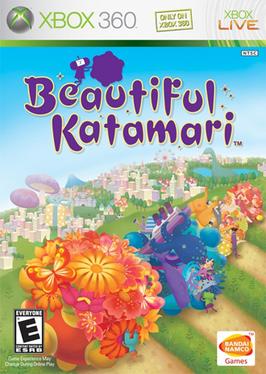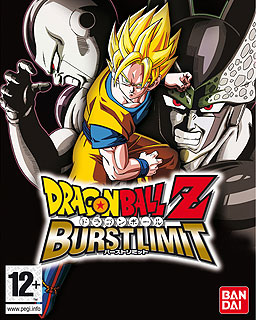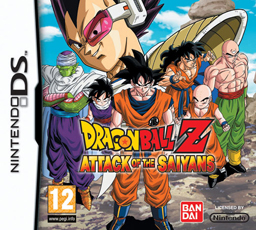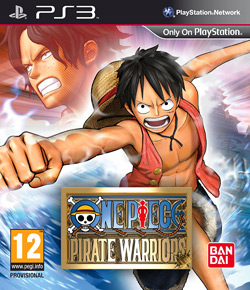
Tekken 6 is a fighting game developed and published by Bandai Namco Games. It is the sixth main and seventh overall installment in the Tekken franchise. It was released in arcades on November 26, 2007, as the first game running on the PlayStation 3-based System 357 arcade board. A year later, the game received an update, subtitled Bloodline Rebellion. Both versions also saw a limited release in North America. A home version based on the update was released for the PlayStation 3 and Xbox 360 on October 27, 2009. This was the first time a main installment was produced for another console. It was ported for the PlayStation Portable on November 24, 2009. The game was produced by Katsuhiro Harada, who aimed to give the fights a strategic style while remaining faithful to the previous games in the series.

Beautiful Katamari, released in Japan as Beautiful Katamari Damacy, is a video game by Namco Bandai Games for the Xbox 360. Beautiful Katamari is the fourth game in the Katamari series of games following Katamari Damacy, We Love Katamari, and Me & My Katamari.

Soulcalibur IV is the fifth installment in the Soulcalibur series of fighting games, released for the PlayStation 3 and Xbox 360 in 2008. It features greatly improved graphics over the previous title, and includes three guest characters from the Star Wars franchise as playable fighters. This was the first Soulcalibur game not to receive an arcade version, and the last Soul series’ 1590 A.D. trilogy game, following II and III. A spin-off for the PlayStation Portable, Soulcalibur: Broken Destiny, was released in 2009.

Dragon Ball Z: Budokai Tenkaichi is a series of fighting games developed by Spike based on the Dragon Ball manga series by Akira Toriyama. The series was published by Namco Bandai Games under the Bandai brand name in Japan and Europe, and as Atari in North America and Australia from 2005 to 2007. Atari's PAL distribution network was absorbed into Bandai Namco Partners and Bandai Namco has also handled publishing in North America for future Dragon Ball Z games since 2010, effectively ending Atari's involvement.

Dragon Ball Z: Burst Limit is a fighting video game for the PlayStation 3 and Xbox 360 based on the anime Dragon Ball Z. The game was developed by Dimps and published in North America and Australia by Atari, and in Japan and Europe by Namco Bandai under the Bandai label. It was released in Japan on June 5, 2008, in Europe on June 6, 2008, North America on June 10, 2008, and in Australia on July 3, 2008.

Naruto: Ultimate Ninja Storm, known in Japan as Naruto: Narutimate Storm is the first installment of the Ultimate Ninja Storm series, it is a fighting game developed by CyberConnect2 and published by Namco Bandai Games. The game was released for the PlayStation 3 (PS3) across North America, Europe and Australia in November 2008 and in Japan on January 15, 2009. It is based on the popular manga and anime series Naruto by Masashi Kishimoto, and the first installment of the Naruto: Ultimate Ninja series on the PS3.

Dragon Ball: Origins, known as Dragon Ball DS in Japan, is a video game for the Nintendo DS based on the Dragon Ball franchise created by Akira Toriyama. The game was developed by Game Republic and published by Atari and Namco Bandai under the Bandai label. It was released on September 18, 2008 in Japan, November 4, 2008 in North America, December 5, 2008 in Europe, and December 11, 2008 in Korea. The game was released in Australia on December 4, 2008, but was later recalled as its PG rating did not reflect the "racy" content found in the game and was subsequently given a higher rating.

Dragon Ball Z: Infinite World is a fighting video game for the PlayStation 2 based on the Dragon Ball franchise. The game was developed by Dimps, and published in North America by Atari, and in Europe and Japan by Namco Bandai Games under the Bandai label. It was released in North America on November 4, 2008, in Japan on December 4, and in Europe the following day.

Dragon Ball Z: Attack of the Saiyans, known in Japan as Dragon Ball Kai: Saiyan Invasion, is a video game based on the Dragon Ball franchise for the Nintendo DS. It was released in Japan on April 29, 2009, and in Europe and North America in November 2009. The game is developed by Monolith Soft and distributed by Namco Bandai in North America ; it is one of the first games in the Dragon Ball franchise to be published by Namco Bandai, as the company would acquire the license from previous holder Atari in July of the same year.

Dragon Ball: Revenge of King Piccolo, released in Japan as Dragon Ball: World's Greatest Adventure, is a video game based on the Dragon Ball franchise. It was developed by Media.Vision and published by Namco Bandai under the Bandai label. It was released in Japan on July 23, 2009, and in other territories in October of that same year.

Naruto Shippuden: Ultimate Ninja Storm 2, known in Japan as Naruto Shippuden: Narutimate Storm 2 is a fighting game developed by CyberConnect2. It is the second installment in the Ultimate Ninja Storm series, and the sequel to Naruto: Ultimate Ninja Storm published by Namco Bandai Games. It is based on the anime and manga series Naruto by Masashi Kishimoto, and was released in late-2010 for the PlayStation 3 and Xbox 360. As a sequel to Naruto: Ultimate Ninja Storm, the story and cast are based on their Part II manga appearances, known in the anime as Naruto Shippuden. The game mainly stars title character Naruto Uzumaki, a teenage ninja, and his fights against the Akatsuki terrorist organization.

Dragon Ball: Origins 2, known as Dragon Ball DS 2: Charge! Red Ribbon Army in Japan, is a video game for the Nintendo DS based on the Dragon Ball franchise and the sequel to 2008's Dragon Ball: Origins. The game was developed by Game Republic and published by Namco Bandai throughout North America and everywhere else under the Bandai label. Released in 2010.

Dragon Ball: Raging Blast 2 is a video game based on the manga and anime franchise Dragon Ball and is a follow-up to the 2009 video game Dragon Ball: Raging Blast. It was developed by Spike and published by Namco Bandai under the Bandai label for the PlayStation 3 and Xbox 360 gaming consoles in the beginning of November 2010.

Dragon Ball Kai: Ultimate Butōden is a fighting video game for the Nintendo DS based on the Dragon Ball franchise. It was released in Japan on February 3, 2011.

Dragon Ball Z: Ultimate Tenkaichi is a game based on the manga and anime franchise Dragon Ball Z. It was developed by Spike and published by Namco Bandai Games under the Bandai label in late October 2011 for the PlayStation 3 and Xbox 360. Despite its English title, it is not actually a part of the Budokai Tenkaichi fighting game series.

One Piece: Pirate Warriors is an action video game developed by Omega Force and published by Bandai Namco Games for PlayStation 3. It was released on March 1, 2012, in Japan, September 21, 2012, in Europe and September 25, 2012, in North America. The game was developed in commemoration of the 15th anniversary of the One Piece manga and anime franchise by Eiichiro Oda. Pirate Warriors was also the first title in the One Piece video game franchise which was released on a PlayStation system since One Piece: Grand Adventure in 2006.

Naruto Shippuden: Ultimate Ninja Storm 3, known in Japan as Naruto Shippūden: Narutimate Storm 3, the fourth installment of the UltimateStorm series, is a fighting game developed by CyberConnect2 as part of the Naruto: Ultimate Ninja video-game series based on Masashi Kishimoto's Naruto manga. It was first released for PlayStation 3 and Xbox 360 by Namco Bandai Games on March 2013 in North America and in Europe, and on April 2013 in Japan.

Dragon Ball Z: Battle of Z is an action role-playing fighting game based on the Dragon Ball franchise. It was developed by Artdink and published by Bandai Namco Games. The game features elements from the 2013 Dragon Ball Z film, Battle of Gods, including the first appearance in a Dragon Ball video game of Goku's Super Saiyan God form, Beerus, and Whis.

J-Stars Victory VS is a crossover fighting video game that combines the universes of several Weekly Shōnen Jump manga series, including former series and some that have been transferred to other magazines. It was released in Japan by Bandai Namco Entertainment on March 19, 2014 for the PlayStation 3 and PlayStation Vita in celebration of Weekly Shōnen Jump's 45th anniversary. It was re-released for western territories as J-Stars Victory VS+ for the PlayStation 4, PlayStation 3, and PlayStation Vita, with an additional Arcade Mode for the international release. It was released in Europe on June 26, 2015 and in North America on June 30, 2015. A follow-up game, Jump Force, released on February 15, 2019 to tie in with the 50th anniversary of Weekly Shōnen Jump.

Dragon Ball Xenoverse is an action role-playing fighting game based on the Dragon Ball franchise developed by Dimps and published by Bandai Namco Games. It was released in February 2015 for PlayStation 3, PlayStation 4, Xbox 360, Xbox One, and Microsoft Windows.




















